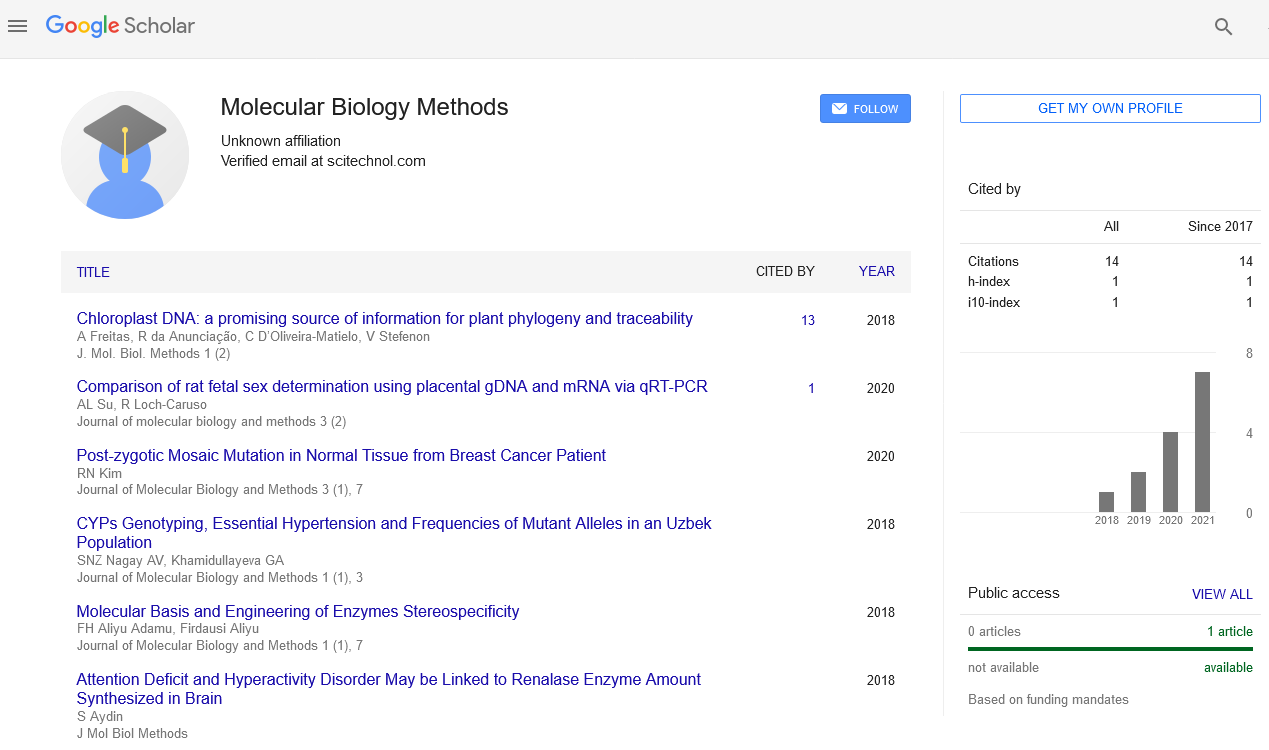Opinion Article, J Mol Biol Methods Vol: 6 Issue: 1
ELISA: Enhancing Immunochemical Analysis through Sensitivity and Specificity
Qian Yoon*
Department of Physiology, National Cheng Kung University, Tainan, Taiwan
*Corresponding Author: Qian Yoon
Qian Yoon Department of Physiology, National Cheng Kung University, Tainan, Taiwan;
E-mail: qianyoon@ncku.tw
Received date: 20 February, 2023, Manuscript No. JMBM-23-94395;
Editor assigned date: 22 February, 2023, PreQC No. JMBM-23-94395 (PQ);
Reviewed date: 09 March, 2023, QC No. JMBM-23-94395;
Revised date: 16 March, 2023, Manuscript No. JMBM-23-94395 (R);
Published date: 23 March, 2023, DOI: 10.4172/JMBM.1000128
Citation: Yoon Q (2023) ELISA: Enhancing Immunochemical Analysis through Sensitivity and Specificity. J Mol Biol Methods 6:1.
Abstract
Description
Immunochemical techniques refer to a group of laboratory methods used to detect and measure biological molecules, including proteins and nucleic acids, in a sample. These techniques rely on the specificity and sensitivity of antibodies to detect the presence of a particular molecule of interest. Immunochemical techniques are widely used in biomedical studies, clinical diagnostics, and drug development. One of the most commonly used immunochemical techniques is the Enzyme- Linked Immunosorbent Assay (ELISA). ELISA involves the use of an antibody that is linked to an enzyme, which produces a signal when a substrate is added. ELISA can be used to detect a wide range of biomolecules, including proteins, peptides, hormones, and drugs, and is widely used in clinical diagnostics and drug development. Another immunochemical technique is Western blotting, which involves the separation of proteins using gel electrophoresis, followed by the transfer of the separated proteins to a membrane, where they are probed with a specific antibody. This technique is widely used to detect and identify proteins in complex samples, such as tissue extracts and biological fluids. ELISA involves several steps that include coating, blocking, incubation, washing, detection, and quantification. These steps can be divided into two main types of ELISA such as Direct ELISA and Indirect ELISA.
Direct ELISA involves coating a microtiter plate with an antigenspecific antibody, followed by the addition of the sample containing the antigen of interest. If the antigen is present in the sample, it will bind to the antibody on the plate. Then, an enzyme-conjugated secondary antibody specific to the antigen is added, which binds to the antigen-antibody complex. The plate is washed to remove unbound antibodies, and a substrate specific to the enzyme is added. The enzyme converts the substrate into a measurable product, which is quantified by spectrophotometry. Indirect ELISA involves coating the microtiter plate with the antigen of interest. Then, the sample containing the antibody specific to the antigen is added. After washing the plate, a secondary antibody conjugated to an enzyme and specific to the primary antibody is added. The plate is then washed, and a substrate specific to the enzyme is added, which generates a measurable product.
ELISA has numerous applications in molecular and clinical diagnostics. ELISA is used to measure protein expression levels, screen for small molecule inhibitors of protein-protein interactions, and study the dynamics of protein interactions. ELISA is also used in drug discovery to identify potential drug targets and test the efficacy of drugs. In clinical diagnostics, ELISA is used to detect infectious diseases, such as HIV, hepatitis, and Lyme disease, by detecting the antibodies produced by the immune system in response to the infection. ELISA is also used to measure hormone levels, such as testosterone, estrogen, and progesterone, in blood and urine samples. In addition, ELISA is used to detect cancer biomarkers, such as Prostate-Specific Antigen (PSA) and Carcino-Embryonic Antigen (CEA), which are proteins produced by cancer cells and released into the blood. The main advantages of ELISA include its high sensitivity, specificity, and reproducibility.
Conclusion
The widespread use of immunochemical techniques has led to significant advances in our understanding of biological systems and has improved the diagnosis and treatment of diseases. ELISA is a versatile and widely used immunochemical technique that can detect the presence of a specific antigen in a biological sample. ELISA has numerous applications in clinical diagnostics, and its high sensitivity and specificity make it a powerful tool for the detection of infectious diseases, cancer biomarkers, and hormone levels.
 Spanish
Spanish  Chinese
Chinese  Russian
Russian  German
German  French
French  Japanese
Japanese  Portuguese
Portuguese  Hindi
Hindi 